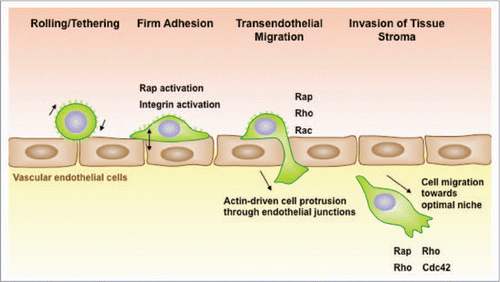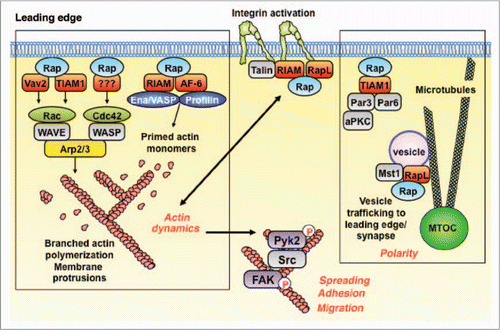Figures & data
Figure 1 Rap activation is required for multiple steps in lymphoma dissemination. B-cell lymphomas exit the vasculature using the same mechanisms as normal B cells. Once B cells are tethered via selectin-mediated rolling, chemokines immobilized on the surface of vascular endothelial cells convert integrins to a high affinity state via a mechanism that involves activation of the Rap GTPases. This permits firm adhesion. Adhered B cells migrate across the endothelium and then send out actin-rich protrusions, which penetrate the endothelial barrier to reach the subendothelial matrix. The formation of these membrane processes, and the subsequent movement of the cells through the junctions, requires activation of the Rap, Rho and Rac GTPases. Once in the tissue, B-lymphoma cells assume a polarized morphology and can migrate towards optimal growth niches.

Figure 2 The Rap GTPases are master regulators of actin dynamics, cell morphology, cell polarity and integrin-mediated adhesion. The Rap GTPases are activated subsequent to the binding of chemokines to their receptors or activated integrins to their ligands. The active GTP-bound form of Rap binds effector proteins that promote integrin activation, actin polymerization and membrane protrusion, as well as activation of the Pyk2 and FAK tyrosine kinases, which modulate cell spreading, adhesion and migration. Rap-GTP also plays a key role in establishing cell polarity and may direct membrane vesicles to the leading edge of the cell. See text for details. MTOC, microtubule-organizing center.
